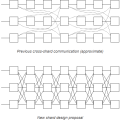
The developers of the Grin cryptocurrency (GRIN) criticized an article by researcher Ivan Bogaty about how hemanaged to crack the MimbleWimble protocol, which ensures anonymity of transactions in the Grin blockchain.
The rich claims that he managed to commitattack on the additional Dandelion function, which is used on the Grin network to counter the recording of transaction information by spy nodes until the transfer is confirmed. Ivan intercepted data on 96% of transactions before they were combined with other money transfers to hide information about the sender. The researcher was not able to get information about the 4% transactions that were placed, because they were aggregated before the nodes identified them. As a result of studying the protocol, Rich came to the conclusion that MimbleWimble is not an effective alternative to Zcash or Monero.
Grin chief developer Daniel Lenberg addressedattention to the inconsistency of the materials indicated in Bogaty’s publication. In particular, he stated that Ivan confused the term “output transaction channels” (TXOs) with the definition of “cryptocurrency address”. According to Lenberg, Grin's anonymous model has no addresses, so transactions are carried out using output channels. TXOs do not make it possible to determine the address of the sender of the payment, and therefore law enforcement agencies cannot identify the identity of the owner of the cryptocurrency.
Daniel acknowledged the privacy systemdata implemented on the Grin network is far from perfect. However, this does not mean that MimbleWimble or the blockchain functions do not work. According to him, the ability to bind a transaction to a specific TXO is a flaw, which Grin specialists are working to eliminate. Lenberg also noted that in June 2019, a hard fork was implemented in the Grin blockchain to upgrade an algorithm aimed at increasing the level of ASIC-resistance of the network. This measure significantly reduces the likelihood of a successful 51% attack on the blockchain.





